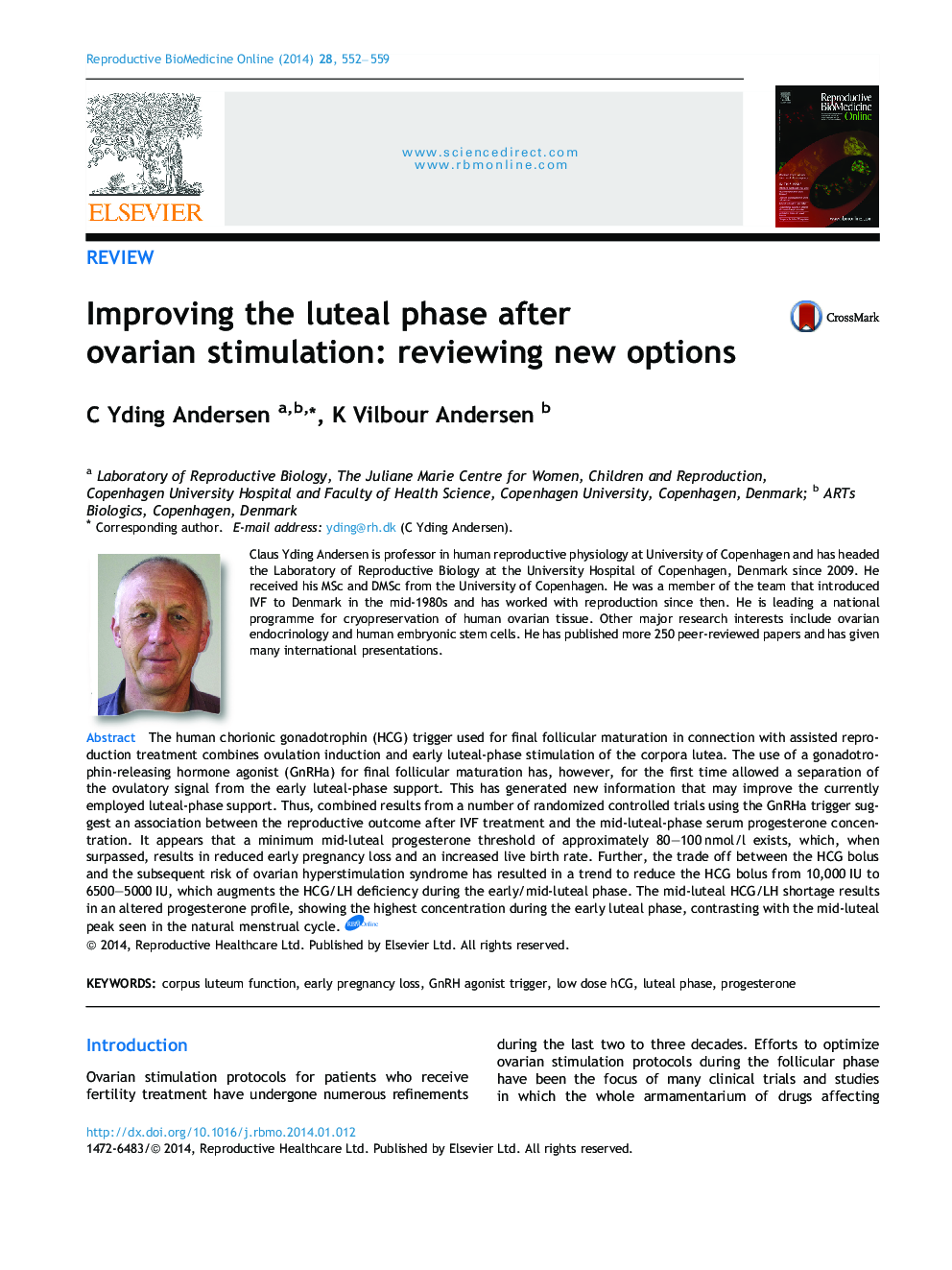| Article ID | Journal | Published Year | Pages | File Type |
|---|---|---|---|---|
| 6189034 | Reproductive BioMedicine Online | 2014 | 8 Pages |
The human chorionic gonadotrophin (HCG) trigger used for final follicular maturation in connection with assisted reproduction treatment combines ovulation induction and early luteal-phase stimulation of the corpora lutea. The use of a gonadotrophin-releasing hormone agonist (GnRHa) for final follicular maturation has, however, for the first time allowed a separation of the ovulatory signal from the early luteal-phase support. This has generated new information that may improve the currently employed luteal-phase support. Thus, combined results from a number of randomized controlled trials using the GnRHa trigger suggest an association between the reproductive outcome after IVF treatment and the mid-luteal-phase serum progesterone concentration. It appears that a minimum mid-luteal progesterone threshold of approximately 80-100Â nmol/l exists, which, when surpassed, results in reduced early pregnancy loss and an increased live birth rate. Further, the trade off between the HCG bolus and the subsequent risk of ovarian hyperstimulation syndrome has resulted in a trend to reduce the HCG bolus from 10,000Â IU to 6500-5000Â IU, which augments the HCG/LH deficiency during the early/mid-luteal phase. The mid-luteal HCG/LH shortage results in an altered progesterone profile, showing the highest concentration during the early luteal phase, contrasting with the mid-luteal peak seen in the natural menstrual cycle.Treatment of infertility involves administration of different drugs that affect the reproductive organs and collectively increases chances of becoming pregnant. Often treatment is divided into different phases such as: (i) pituitary down-regulation; (ii) stimulation of follicular growth; (iii) final maturation of preovulatory follicles; (iv) in-vitro culture of oocytes and embryos; and (v) luteal-phase support. In particular, luteal-phase support has not received the same interest as the other phases of treatment, and administration of exogenous progesterone is considered the gold standard for luteal-phase support. However, recent randomized controlled trials involving the use of a gonadotrophin-releasing hormone agonist for final maturation of follicles have revealed that the luteal phase may be optimized and result in an augmented reproductive outcome. There appears to be a minimum threshold limit of mid-luteal-phase progesterone that needs to be surpassed to get the best chances of implantation. Current luteal-phase support does not, in all circumstances, reach this threshold or reaches it too early during the luteal phase. Further, the shape of the progesterone profile during the luteal phase with the current treatment may not be optimal. Based on these observations new ways to optimize the luteal-phase support are discussed.
